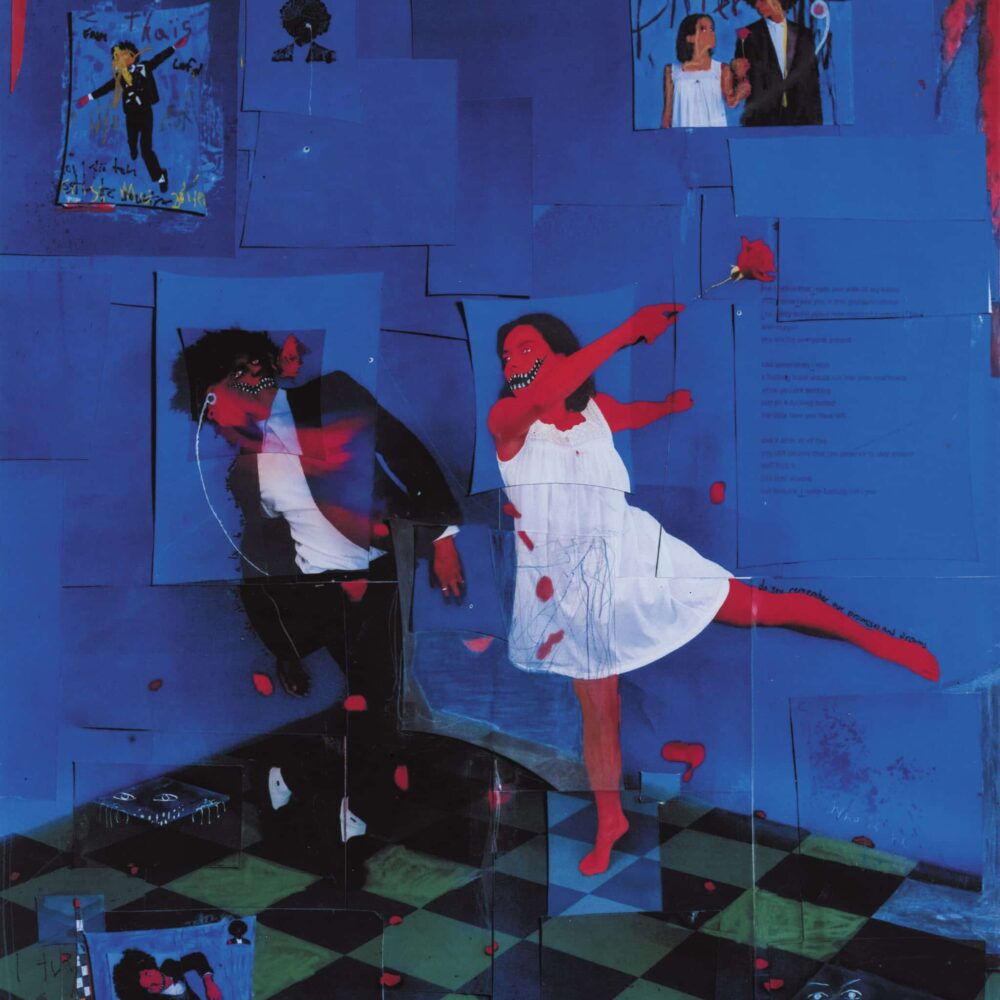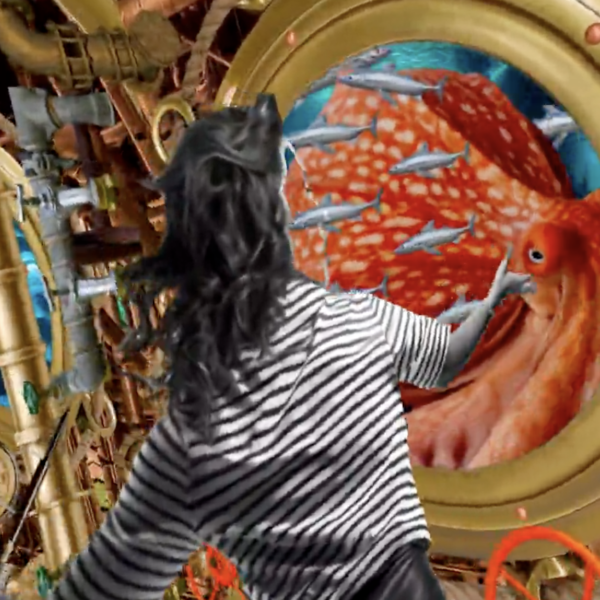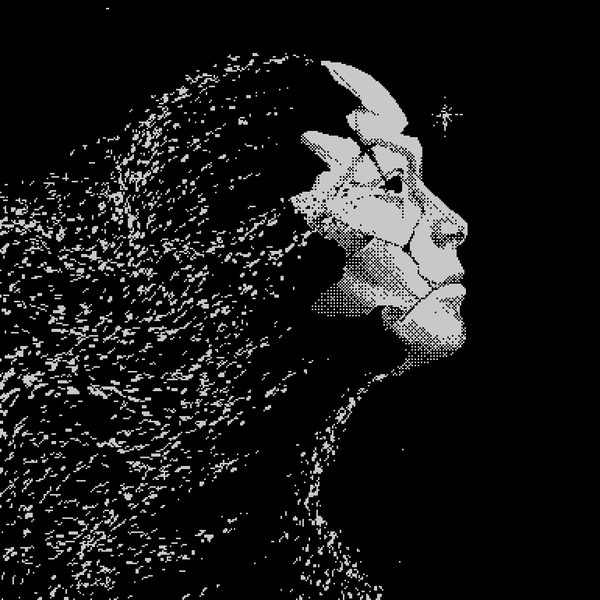Talking Through the Therapeutic Nature of Art With Tjo
Tjo is a remarkable Canadian artist best known for his digital work and mixed media creations. His work is made “for the fractured” as he is dedicated to creating conversation pieces surrounding mental health. In this interview, we dive into Tjo’s discovery of healing effects of art and his mental health journey. Please note, this conversation has been edited for brevity and clarity.

Q: What’s your earliest moment that you thought you would become an artist?
Tjo: I’m from a pretty industrial art city, and I didn’t actually think that I’d ever be an artist. I did have the opportunity to start taking pictures when I was about 11 years old, around that age. I was fairly young, and my father, who sells music instruments for a living, took pictures for fun. He let me borrow one of his cameras and I started taking pictures all the time. I’d say that was the first time I kind of got interested in creating, or I just felt this sort of satisfaction of just seeing something true. At that time, I had no idea. It wasn’t even something I envisioned being possible– being an artist.
Q: What was your childhood like?
Tjo: I was raised by my father, my childhood was fairly standard I think. I went to school, I used to play musical instruments, but I ended up stopping. My stepmother was an alcoholic and one of my stepfathers was also too. So I had some of those sort of weird dynamics, but I still was able to have what I would say was a fairly good childhood.
I say that my art is my therapy and I use it to express anything that I'm feeling, or that I want to just get out of my chest.
Q: One thing I think is interesting about your work is that it’s extremely emotional. Have you put a lot of your own backstory and your thoughts and emotions into the pieces themselves as well?
Tjo: Yeah, definitely. I always try to. I say that my art is my therapy and I use it to express anything that I’m feeling, or that I want to just get out of my chest. That’s pretty much what I’ve been doing since I was young. I’ve always been using creating as a sort of outlet for those emotions, and for anything in general. Somehow, I’m now actually an artist, which is just crazy to me. I’m still getting used to the word because it wasn’t even a possible path from my standpoint.
I always wanted to create simply because it makes me feel good and it helps me a lot, but I never thought I’d be making more than a living from it. It’s still a lot to take in. I want to be a proactive person and bring more happiness, and just try to be more of a voice for mental health.
Q: You’ve talked a lot about the importance of mental health, and art as a form of therapy. If someone was reading an interview by you or looking at one of your pieces, what kind of messages do you have for them?
Tjo: I’m trying to find ways to do more than just the art, although I think the art has been helping some people. I’ve gotten a lot of messages from people sharing their stories with me because of pieces of art I did. I have been trying to document my struggle with pure OCD. When it comes to my work, a lot of it is just for myself. I try to channel all that stress and that panic into pieces. I still have some sort of knowledge when it comes to psycho Neuro-Linguistic Programming– things like human archetypes and compartmental behavior kind of stuff. I looked a lot into that. My work, although it is extremely precise for me, leaves a lot of room for interpretation. I guess that allows people to see themselves in those pieces and address their own struggles through that.
Q: Did you always have an awareness that these were practices that you wanted to take on? Were you at a young age where you’re like I need to meditate, I need to be mindful?
Tjo: My father always said that mental health basically didn’t exist. I mean, he was a great single father, but he still was raised a long time ago. There definitely wasn’t a place for mental health awareness in my childhood. But in my direct knowledge, I never really thought about mental health as something that existed until much later when I got to a very, very, very bad place from my pure OCD. My mother came back into my life and told me that I should go see a psychiatrist. Before that, I had zero education and zero awareness around mental health. I’ve been working on that for almost three years now.
There's something about that creative process that gives away those pressures and those thoughts to the piece itself, the piece lifts the pressures off your shoulders.
Q: What about art do you think is so therapeutic? Art is beginning to be regarded as a universal form of therapy, but if you were to break down why and what that means to you, what is the reason for that?
Tjo: Art definitely became a place for me to channel my obsessions. I am extremely obsessed with my practice. There’s something about that creative process that gives away those pressures and those thoughts to the piece itself, the piece lifts the pressures off your shoulders.
Q: How’d you end up falling down the crypto rabbit hole?
Tjo: A friend of mine told me to look into it back in 2020, I think at the end of 2020. At first, I definitely didn’t understand what it was all about. I was just so curious about this new thing that was going on and I just started reading white papers and trying to understand what crypto was, what NFTs were, and just what all of that was. I don’t know, I trusted my friend. He’s into creative direction and is overall a big business guy. I just naively was like, “Oh, I’m going to look into it.”
Then, I started getting extremely interested in everything that was going on and especially the technology. I thought that was so crazy to be able to own something digitally. When I started understanding what people were doing with NFTs, I started to get extremely interested in the future of this space. It was just extremely inspiring and invigorating. I don’t think that just being blindly scared of things is the answer. And right now that’s a lot of the things I’m seeing is just people being scared and mad for no reason.
Q: What is that process like for creating your art? What is it made out of? How would you describe it?
Tjo: Well when I make a piece, often the physical is going to be different from the final piece because I am conscious that the final version of the piece is digital. I love working physically. To me, it feels a lot more liberating to be working with things in real life. The physical process itself is just more therapeutic for me. It makes me feel it is just a lot more personal in a sense. Once it’s scanned and digitized, I retouch things and try to make it the best for the screens. So it’s a mix of both digital and analog approaches that I mix together to reach that feeling I’m trying to depict.
Q: Do you think your work is meant to be viewed on the computer?
Tjo: Well, up until now, I think the best way was on screens. I was working with really cheap paper, archival paper, which is just paper without acid in it– so the physical itself deteriorates if it’s not archived. The digital version is really the way to see those early pieces. Now, I’m working with bigger and bigger pieces and I’m stepping up the quality, so I’m starting to have physical pieces that are beautiful in person and are going to stay beautiful because they’re printed on really high quality paper. Yes, it’s cool to have it available for all on the internet, but I think that the best way to see them is once it’s printed.
Q: What do you think the biggest advantage is for artists working in the digital space?
Tjo: In an era where everything is online, it’s the first time where people can actually prove that they created something, and that thing is ownable. Before, you would just post a picture online and a bunch of pages would use that picture without crediting you and it would just be lost in pure unfocused attention. But now everything is traceable.


